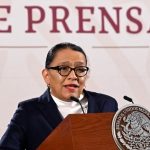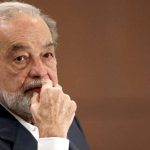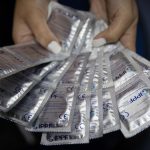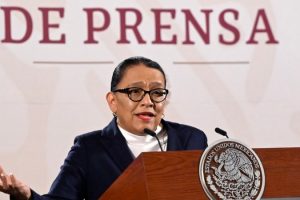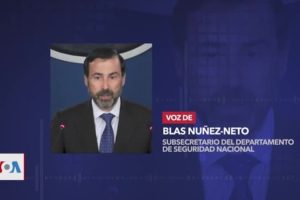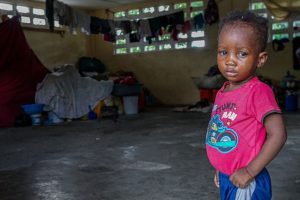In the iconic Plaza de Mayo, the Vice President of Argentina, Cristina Fernández de Kirchner, addressed dozens of citizens who celebrated 20 years since Kirchnerism rose to power. Cristina, the natural leader of that political movement, did not invite the current president of the nation Alberto Fernández, which once again showed the current political fracture. She also did not make official any candidate for the presidential elections this year.
Argentina’s Vice President Cristina Fernández de Kirchner addressed supporters on Thursday in a speech many expected to be an announcement of her third presidential run.
Instead, Fernández de Kirchner reviewed the achievements of governments led by her late husband Néstor Kirchner and herself in the past, while also criticizing their political opponents.
During a stormy afternoon in Buenos Aires, thousands of followers listened to Fernández explain the past and current economic situation in Argentina under the government to which he belongs.
The year 2023 is historic for Argentine politics. It is not only the 40th anniversary of the restoration of democracy, when the On December 10, 1983, Raúl Alfonsín assumed the presidency after seven years of civic-military dictatorship. It also marks 20 years since Néstor Kirchner was sworn in as president after an economic and political storm that saw five presidents pass in four years.
Kirchner came to power because of the hope of thousands of Argentines to recover from the great banking crisis known as “corralito” that prevented citizens from withdrawing more than 250 dollars a week from their accounts, which produced a dramatic economic situation due to the exhaustion of convertibility and the parity model of the Argentine peso to the dollar.
The beginning of the Kirchner era
Néstor Kirschner, a successful businessman from the southern province of Santa Cruz, governed from 2003 to 2007, in the period known as “popular development” due to the government’s commitment to economic growth with social guarantees. Nestor’s mandate managed to alleviate the social discontent of the “corralito” and presented some advances in economic matters.

According to the World Bank, the Gross Domestic Product (GDP) in 2003 was 127 billion dollars and in 2007 when Néstor left the executive the GDP was 287 billion dollars.
A growth that produced false confidence. According to critics of Kirchnerism, the apparent economic stability from 2003 to 2007 was the product of a combination of circumstantially solid macroeconomic legacies and the fortune of a favorable globalization that rewarded ‘commodities’ or raw materials in the international market.
However, the accelerated investment, the optimism about the speed of the increase in employment rates, and the recovery of real wages were accompanied by a high number of informality of salaried work, registering 30.3% in 2007 only in the Greater Buenos Aires. By then, the second highest informality rate in Argentina since the return of democracy.
Kirchner wanted to collect the popular banners of the mythical “Father of the Nation” Juan Domingo Perón and of Latin American political ideologies of the 1950s and 1960s such as ‘developmentalism’. Ideology understood as an adaptation of Keynesianism and development economics to regional conditions with mixtures of nationalism, development economics and Marxism.
Since the beginning of the Kirchner era, Argentina has aligned itself with governments that represented the so-called “pink tide,” a wave of Latin American leftist leaders such as former Venezuelan President Hugo Chávez and former Brazilian President Lula da Silva. Together they promoted the integration of the regional market and the strengthening of Mercosur.
Second stage of Kirchnerism, the birth of a political clan
After Néstor Kirchner at the Casa Rosada, his wife Cristina Fernández followed. Since Néstor’s term, she was already emerging as a presidential candidate, the best candidate to continue the legacy of Kirchnerism. During Cristina’s first term (2007-2011), ‘commodities’ continued to play a fundamental role.
Soybeans, which became the main crop in Argentina, reached a record harvest of 52 million tons in the 2009-2010 season, later surpassed by the harvest of the 2014-2015 cycle, which presented a production of 61.4 million tons. tons. The agricultural sector and minor crops, such as rice and barley, grew steadily during Cristina’s two terms.
However, Argentina’s GDP began to suffer during Cristina’s second term (2011-2015) and the economy was bouncing and falling. GDP it grew in 2013 (2.4%) and 2015 (2.7%), but fell in 2012 (-1%) and 2014 (-2.5%).
In addition, it left inflation of 26.9% according to data from the General Directorate of Statistics and Census of the City of Buenos Aires (18.5%, according to INDEC at that time), and poverty of 30%, according to the Observatory of the Social Debt of the Argentine Catholic University.
In political matters, Cristina’s Kirchnerism was perceived as polarizing by her critics due to the appropriation of claims from historical social struggles, such as the search for the truth about the disappearance of children during the Jorge Videla dictatorship, were Cristina’s flagship issues, who launched a close relationship with the representatives of The Grandmothers of Plaza de Mayo Civil Association, an Argentine human rights organization whose purpose is to locate and return to their legitimate families the children who disappeared from the dictatorship.
In turn, a fierce battle between Cristina and the media, and the strange death of prosecutor Alberto Nisman, who was investigating her for her alleged cover-up of the Iranian case in the terrorist attack on the AMIA Jewish headquarters in Buenos Aires in 1994, made that Cristina Fernández de Kirchner had a fluctuating public image and that Argentines decided in 2015 to vote in the presidential elections for the first time against Kirchnerism.
End of the golden stage of the Kirchner era
The government of right-wing Mauricio Macri (2015-2019) interrupted the Kirchner era in executive power. However, it served as a reoxygenation of Kirchnerism headed by Cristina Fernández from a fierce opposition to Macri’s neoliberal policies, especially the million-dollar loan requested from the International Monetary Fund (IMF) to rescue an Argentine economy that was sinking in inflation.

Of the four years of Macri’s mandate, three were recessive and only in 2017 there was a growth of 2.8%. The leader of Juntos por el Cambio, a center-right coalition, registered high levels of inflation (53.8% when he left the government, according to INDEC).
The economic situation in Argentina has only worsened in the last six years despite the return of a new version of Kirchnerism to power with Cristina Fernández as Alberto Fernández’s vice-presidential ticket.
The last defeat for Cristina and for Kirchnerism was the decision of a criminal court in Argentina that sentenced the vice president of the country to six years in prison for the crime of fraudulent administration during the 12 years that she and her late husband, former president Néstor Kirchner, governed.
With EFE, AP and local media

